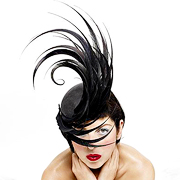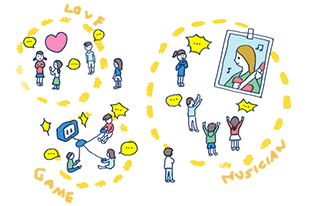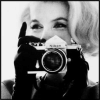- 詳細 2024年3月25日 16:19更新
-
A self-confessed eccentric and champion of many of this generation's fashion stars, the career path of Isabella Blow was a true inspiration; from a little girl trying on her mother's hats, she grew to be one of the industry's most respected stylists.
Born Isabella Delves-Broughton in London in 1958, she lived in Cheshire for the first 21 years of her life, during which fashion played a small part. Having studied at Heathfield school up to A Level, she enrolled in secretarial college before taking on a variety of odd jobs including cleaning and shop work. Hats, however, featured early. "My first memory of a hat is when I was eight years old and I tried on a giant pink hat of my mother's," she says. "There's a photograph of me and I look as happy as anything to be wearing it."
Blow moved to New York in 1979 to study Ancient Chinese Art at Columbia University, where she shared a room with Catherine Oxenburg, aka Amanda in Dynasty. A year later she abandoned her studies to move to West Texas to experience her first taste of fashion working for Guy Laroche.
In 1981, her big break came when she was introduced to the then fashion director of US Vogue, Anna Wintour, by Bryan and Lucy Ferry and the two bonded over Vita Sackville West.
She was hired first as Wintour's assistant and then to organise fashion shoots under the discerning eye of André Leon Talley, now US Vogue's Editor At Large, and was soon befriending the likes of Warhol and Basquiat, "who we were both in love with". In 1986, Blow returned to London to become assistant to Michael Roberts, then fashion director both of Tatler and The Sunday Times and, thanks to him, worked her way up to the position of Style Editor at Tatler.
In 1988 she met Detmar Blow at a wedding in Salisbury Cathedral. They became engaged just 16 days later and married in Gloucester Cathedral the following year.
It was around this time that she met one of her greatest fashion associates, Philip Treacy. He first came to her attention when he arrived at the Tatler offices in 1989 touting a green felt hat. "I was crazy for it so I phoned him at the Royal College of Art and asked him to make my wedding head-dress," she says. Shortly afterwards Treacy moved into a Belgravia basement belonging to Blow's mother-in-law, where he lived and worked for two years. As well as Philip Treacy, Blow is credited with discovering Alexander McQueen, Hussein Chalayan, Honor Fraser, Stella Tennant and Sophie Dahl, whom she described as a "blow-up doll with brains".
McQueen first caught Blow's eye when he presented his degree collection at the St Martins College graduation show. "I wanted everything in it," she says. "When I said, 'I know this sounds a bit weird but I want to buy the whole of your collection,' he offered to sell me a coat for 」350. I said, 'That's a lot for a student.' And he said, 'But I made it.' In the end I bought it all for 」5,000 but it took me a long time to pay for it."
From 1993, Blow spent four years at British Vogue, where she produced features such as the famous London Babes shoot, in which Steven Meisel photographed Honor Fraser, Stella Tennant, Bella Freud and Plum Sykes in various locations around London. She went on to become Fashion Director of The Sunday Times Style magazine, where she spent four years. She subsequently took up the role of fashion director at Tatler, as well as consulting for Dupont Lycra, Lacoste and Swarovski, which she reinvented with a little help from Treacy, McQueen and Julien Macdonald. In 2002, she became the subject of an extraordinary exhibition at the London Design Museum featuring all the hats made for her by Treacy. A book by Treacy, When Philip met Isabella, featuring photographs and sketches of her in some of her most outrageous and memorable outfits, was launched at the same time.
Isabella died on Sunday May 6 2007, having been treated for cancer and severe depression for some months, at the age of 48. Tributes included those from her husband who called her "a ray of sunshine", Philip Treacy who said "she came from the establishment but was a punk at heart" and Tatler editor Geordie Greig who called her "intoxicating, a free spirit".
困ったときには










